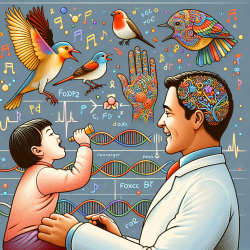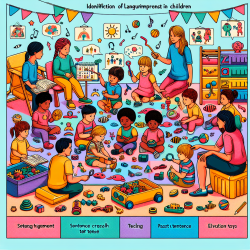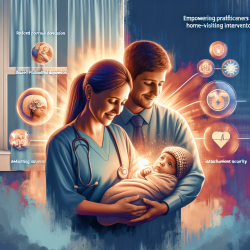The intricate dance of vocal learning is a marvel of both nature and science. Recent research has unveiled fascinating connections between the vocal learning abilities of birds and human speech functions. This convergence offers promising avenues for enhancing therapeutic practices in speech therapy and understanding speech-related disorders.
The Research at a Glance
A study titled "Positive selection in noncoding genomic regions of vocal learning birds is associated with genes implicated in vocal learning and speech functions in humans" delves into the genetic underpinnings of vocal learning in birds. This research identifies accelerated genomic regions (ARs) specific to vocal learning birds, which are enriched near genes with known speech functions, such as FOXP2, NEUROD6, ZEB2, and MEF2C. These findings highlight a molecular convergence between avian song and human spoken language.
Implications for Practitioners
The implications of these findings are profound for practitioners working with speech disorders. Here are some ways to integrate these insights into practice:
- Genetic Screening: Understanding the genetic basis of vocal learning can enhance early diagnosis and intervention strategies for speech development disorders, including autism spectrum disorders (ASDs). Genetic screening could become a powerful tool in identifying at-risk individuals.
- Model Systems: Avian models can be used to study human speech disorders. The genetic similarities suggest that birds could serve as effective models for exploring the mechanisms underlying human speech and its disorders.
- Therapeutic Strategies: Insights from this research can inform new therapeutic approaches that leverage the genetic pathways involved in vocal learning. For example, targeting specific genes like FOXP2 could lead to novel interventions.
The Path Forward
This research encourages further exploration into the genetic factors influencing vocal learning and their applications in therapy. Practitioners are urged to stay informed about ongoing studies and consider how these insights might be applied in clinical settings.
The convergence of advanced vocal learning traits across species underscores the potential for cross-species studies to illuminate complex human traits. By embracing these findings, practitioners can enhance their understanding and treatment of speech-related disorders.
The journey into the genetics of vocal learning is just beginning, and its potential to transform therapeutic practices is immense. As we continue to unlock these secrets, we open new doors to understanding the intricacies of human speech.
To read the original research paper, please follow this link: Positive selection in noncoding genomic regions of vocal learning birds is associated with genes implicated in vocal learning and speech functions in humans.










